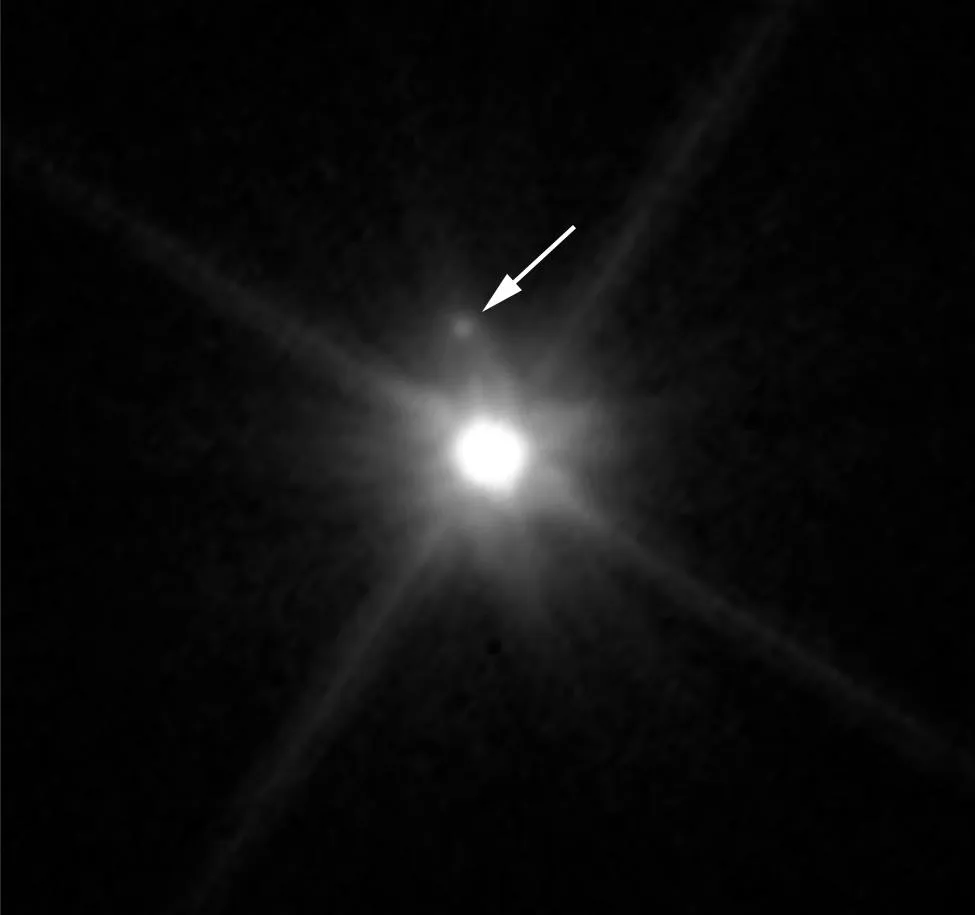Hubble Spies a Tiny Moon Orbiting Dwarf Planet Makemake
Our solar system still has plenty of surprises
Since the Hubble Telescope launched into orbit 26 years ago, it has captured some of the most beautiful pictures of the universe’s wonders. And though it often turns its lens to distant stars it still doesn't miss our cosmic neighborhood. This week, using images taken by the Hubble, astronomers announced that they have discovered a tiny moon orbiting dwarf planet Makemake at the edges of our solar system, Becky Ferreira reports for Motherboard.
Home to Pluto and its fellow dwarf planets Eris and Makemake, the Kuiper Belt is one of the most mysterious and least-explored parts of our solar system. A band of ice, asteroids, comets and dwarf planets, the Kuiper Belt starts at Neptune’s orbit and stretches out for billions of miles.
“Makemake is in the class of rare Pluto-like objects, so finding a companion is important,” astronomer Alex Parker, who described the moon in a new study, said in a statement. “The discovery of this moon has given us an opportunity to study Makemake in far greater detail than we ever would have been able to without the companion.”
Makemake (pronounced MAH-kay-mah-kay) is the third-largest Kuiper Belt Object (KBO) known today, after Pluto and Eris. While astronomers have observed the dwarf planet for years, they missed spotting its moon until it was captured in an image by the Hubble one year ago, on April 27, 2015, Phil Plait writes for Slate.

The moon is known as S/2015 (136472) 1, or simply “MK2,” and appears to be about 124 miles in diameter. While astronomers gleaned enough info from the images to identify Makemake's moon, the series of images didn’t show much movement, which makes it hard to judge how long MK2 takes to orbit the dwarf planet, Plait writes. Early estimates place the moon’s orbit at anywhere between 12 and 660 days at a distance of about 13,000 miles—a wide range that makes it difficult to say anything conclusive.
“Our preliminary estimates show that the moon’s orbit seems to be edge-on, and that means that often when you look at the system you are going to miss the moon because it gets lost in the bright glare of Makemake,” Parker said in a statement.
While MK2 remains somewhat mysterious for now, it may help astronomers learn more about Makemake itself. By measuring MK2’s size and orbit, astronomers will be able to figure out just how dense the dwarf planet is, as well as what sort of materials it is composed of. In addition, the shape and distance of the moon’s orbit might hold valuable clues as to how it was formed, Mike Wall writes for Space.com.
Luckily, astronomers should be getting more information about MK2 soon enough. Now that scientists know it is out there, the moon will be a good subject for the Hubble as well as its successor, the James Webb Space Telescope, which is scheduled for launch in 2018. In the meantime, the information about MK2 is helping astronomers not just learn more about our cosmic neighborhood, but about other dwarf planets like Pluto.
“This...discovery opens a new chapter in comparative planetology in the outer solar system,” NASA astronomer Marc Buie said in a statement.

